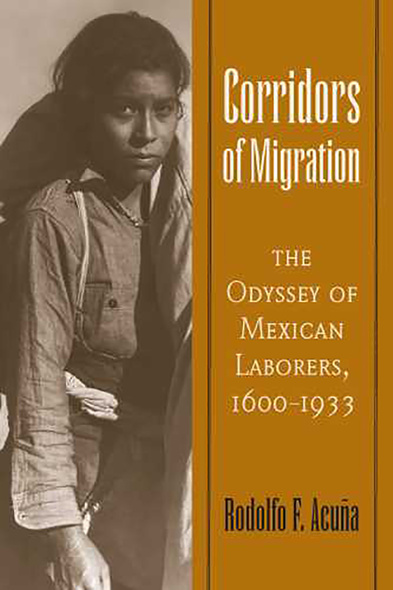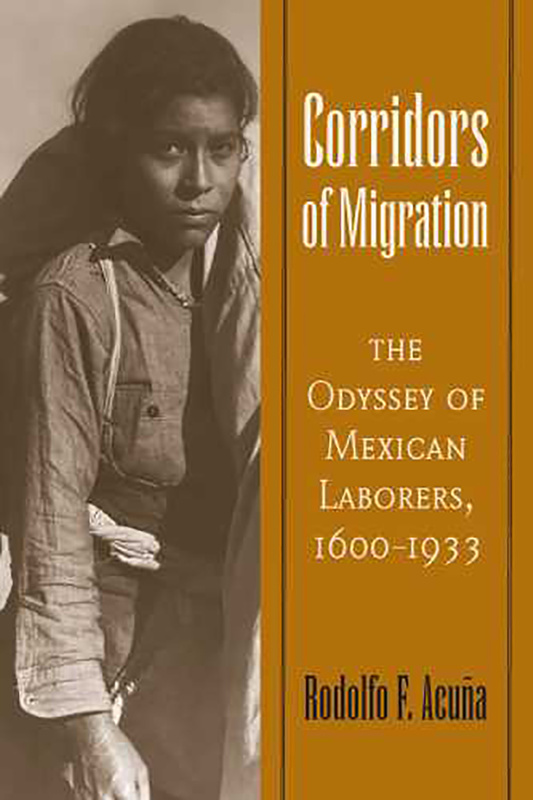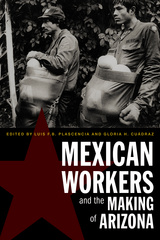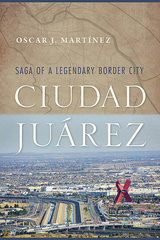
430 pages, 6 x 9
34 b&w illustrations, 4 maps
Paperback
Release Date:21 Aug 2008
ISBN:9780816528028
Corridors of Migration
The Odyssey of Mexican Laborers, 1600-1933
The University of Arizona Press
A Choice Outstanding Academic Title
In the San Joaquin Valley Cotton Strike of 1933, frenzied cotton farmers murdered three strikers, intentionally starved at least nine infants, wounded dozens of people, and arrested more. While the story of this incident has been recounted from the perspective of both the farmers and, more recently, the Mexican workers, this is the first book to trace the origins of the Mexican workers’ activism through their common experience of migrating to the United States.
Rodolfo F. Acuña documents the history of Mexican workers and their families from seventeenth-century Chihuahua to twentieth-century California, following their patterns of migration and describing the establishment of communities in mining and agricultural regions. He shows the combined influences of racism, transborder dynamics, and events such as the industrialization of the Southwest, the Mexican Revolution, and World War I in shaping the collective experience of these people as they helped to form the economic, political, and social landscapes of the American Southwest in their interactions with agribusiness and absentee copper barons.
Acuña follows the steps of one of the murdered strikers, Pedro Subia, reconstructing the times and places in which his wave of migrants lived. By balancing the social and geographic trends in the Mexican population with the story of individual protest participants, Acuña shows how the strikes were in fact driven by choices beyond the Mexican workers’ control. Their struggle to form communities graphically retells how these workers were continuously uprooted and their organizations destroyed by capital. Corridors of Migration thus documents twentieth-century Mexican American labor activism from its earliest roots through the mines of Arizona and the Great San Joaquin Valley cotton strike.
From a founding scholar of Chicano studies and the author of fifteen books comes the culmination of three decades of dedicated research into the causes and effects of migration and labor activism. The narrative documents how Mexican workers formed communities against all odds.
In the San Joaquin Valley Cotton Strike of 1933, frenzied cotton farmers murdered three strikers, intentionally starved at least nine infants, wounded dozens of people, and arrested more. While the story of this incident has been recounted from the perspective of both the farmers and, more recently, the Mexican workers, this is the first book to trace the origins of the Mexican workers’ activism through their common experience of migrating to the United States.
Rodolfo F. Acuña documents the history of Mexican workers and their families from seventeenth-century Chihuahua to twentieth-century California, following their patterns of migration and describing the establishment of communities in mining and agricultural regions. He shows the combined influences of racism, transborder dynamics, and events such as the industrialization of the Southwest, the Mexican Revolution, and World War I in shaping the collective experience of these people as they helped to form the economic, political, and social landscapes of the American Southwest in their interactions with agribusiness and absentee copper barons.
Acuña follows the steps of one of the murdered strikers, Pedro Subia, reconstructing the times and places in which his wave of migrants lived. By balancing the social and geographic trends in the Mexican population with the story of individual protest participants, Acuña shows how the strikes were in fact driven by choices beyond the Mexican workers’ control. Their struggle to form communities graphically retells how these workers were continuously uprooted and their organizations destroyed by capital. Corridors of Migration thus documents twentieth-century Mexican American labor activism from its earliest roots through the mines of Arizona and the Great San Joaquin Valley cotton strike.
From a founding scholar of Chicano studies and the author of fifteen books comes the culmination of three decades of dedicated research into the causes and effects of migration and labor activism. The narrative documents how Mexican workers formed communities against all odds.
A highly readable, well-crafted history of transnational migration and labor struggles. This study deserves a broad readership and would be excellent in both graduate and undergraduate classes.’—Hispanic American Historical Review
'This is one of the most ambitious and signifcant works in Mexican, Chicano, and labor history as well as the history of Mexico- United States relations to appear in recent years....This is a classic, and with its sweeping grasp, massive documentation, and strong writing, it will stand as the greatest scholarly contribution in Acuña's illustrious career.'—Dionicio Nodín Valdés, author of Al Norte: Agricultural Workers in the Great Lakes Region
Rodolfo F. Acuña was the founding chair of the Chicano Studies Department at California State University, Northridge, where he is a professor. He is the author of Occupied America: A History of Chicanos, Sometimes There Is No Other Side, and Anything But Mexican.
Preface
Acknowledgments
1 Why Mexicans Moved
2 The Passing of the Saints
3 The Mesilla Corridor
4 The Sonoran Corridor
5 Corridors, Convergence, and Community
6 Becoming Mexican
7 Mexican Miners
8 The Mexican Revolution
9 To the Other Side of La Linea
10 The Great Copper Wars
11 The Cotton Corridor
12 The San Joaquin Valley Cotton Strike of 1933
13 Bitter Warfare
14 La Mula No Nació Arisca
Abbreviations
Notes
Sources Cited
Index






